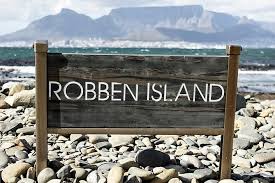The Geology of Table Mountain
The Geology of Table Mountain
Eight hundred million years ago, beneath deep waters, sediments and ocean deposits began to form a continental shelf made of shale. Hot Magma from within the earth's core intruded into this shale around 600 million years ago, and cooled to form hard granite. This very strong igneous rock gave the shale a tough inner core.
Underwater, the shales were eroded, but from 450 million years ago, sediments from rivers created layers of sandstone on top of the granite and shale, known today as 'the Cape Supergroup'. Around 300 million years ago ice sheets flattened the layers of sandstone and, today, you can find deposits made by glaciers at Maclear's Beacon, the summit of Table Mountain (1086m). At this time Africa was at the heart of Pangea - a vast supercontinent - and it was located much further south than modern Africa.
One hundred and sixty-five million years ago, great shifts in the earth's tectonic plates led to the splitting of Pangea into two parts. The southern continent - Gondwanaland - also began to break up, and by 100 million years ago Australia and Antarctica (including India) had broken away from Africa - which remained more or less stationary.
The shifts in the earth's plates created many fold mountains - including the Hottentot-Holland range in the Cape Winelands. But the hard granite base of Table Mountain resisted folding and deflected the forces downwards. This produced uplift in a geological process known as istotacy, or 'emerging relief' and Table Mountain began to rise above sea level. This process probably started about 280 million years ago, and continues to the present day, making Table Mountain one of the oldest mountains in the world (it is six times older than the Himalayas).
As Table Mountain rises, so it is constantly eroded by the onslaught of high winds, rain and fire. The sandstone superstructure is protected from the rough seas by it's granite base (clearly visible along the coastline at Camps Bay and beyond Simon's Town). But its coarse sandstone heights have been worn by the other elements into strange and fantastic shapes, giving the mountain its extraordinary gnarled and craggy appearance. The sheer front face, however, was caused by the action of waves - it is a giant cliff face.
Tour & Accommodation Packages Specials

Special Offer: Table Mountain & Robben Island Explorer



